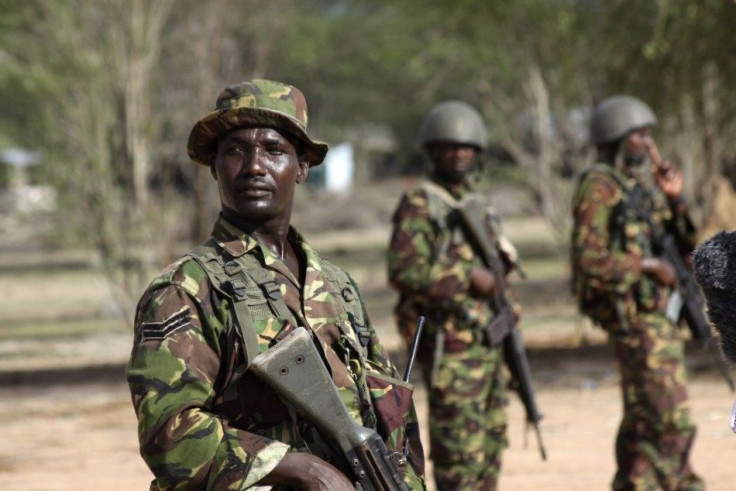Kenyan Security Rests on Al-Shabab's Defeat in Somalia

Military tensions between Kenya and Somali insurgent group al-Shabab continues to rise following the Kenyan military’s decision to invade Somalia on Oct. 16.
In what some have called an “uncoordinated and poorly planned” operation, Kenya is currently attempting to push the Somali guerrillas as far away from the country as possible. Conversely, al-Shabab, which was recently expelled from the Somali capital of Mogadishu by African Union troops, has launched a counter-attack against Kenya.
While the scale of the operation is new, the troubled relationship between the two Horn of Africa nations is decades old.
BBC’s Will Ross writes:
Kenya has in the past trained Somali troops for deployment near the border to create a buffer zone in an effort to keep al-Shabab militants away, but the presence of Kenyan soldiers inside Somalia has always been played down or even flatly denied.
The very public announcement of this incursion into Somalia by the Kenyan army and air force is a significant change of policy, which seems at least partly aimed at sending a message to the Kenyan people and the rest of the world that the issue of security is being taken seriously.
This buffer zone would include the regions of Azania and Jubaland, new semi-autonomous regions between Kenya and Somalia. Al-Shabab is especially powerful in Somalia’s southwest, including Puntland and Somaliland, as well as these two new states.
In pushing al-Shabab out, Kenya hopes to make the region safer for both locals and outsiders. Recently, al-Shabab has allegedly kidnapped three European tourists in Kenya, including a British couple -- both of whom later died in Somalia -- and a disabled French woman.
The Council on Foreign Relations’ conflict prevention expert, Micah Zenko, writes:
It is understandable that Kenya would seek to protect its tourist industry, which has seen its revenues grow by one-third to $737 million since the post-election violence of 2008. Moreover, the specific threat to Westerners is concerning since they make up the overwhelming majority of tourists who visit Kenya.
The economic debate is an interesting one, and the tourism argument only scratches the surface. Political, social and regional stability go hand-in-hand with economic stability and in trying to destroy al-Shabab, Kenya is trying to bring a new era of prosperity.
Kenya, which has been receiving military training from the United States for years, has a significant interest in Somalia’s stability. Kenya’s rate of economic growth has fluctuated significantly since it gained independence in 1963, and the country would like to attract more international corporations to help sustain a steady and prosperous economy. Somalia isn’t helping.
To use a metaphor, when selling your house, the condition of neighbor’s house matters: No one wants to move next door to the people with broken windows, wild teenagers and pirates in the back yard.
“This is about our long-term development plan,” a senior Kenya official told The New York Times. “Kenya cannot achieve economically what it wants with the situation the way it is in Somalia, especially Kismayu.
“Just imagine you’re trying to swim,” he added. “If someone is holding your leg and your arm, how far can you swim?”
The New York Times continues:
Somalia has been a thorn in Kenya’s side ever since Kenya became independent in 1963, and the two countries have followed wildly different paths. Somalia has become synonymous with famine, war and anarchy, while Kenya has become one of America’s closest African allies, a bastion of stability and a favorite of tourists worldwide.
So far, Kenya’s military push hasn’t made any significant short-term progress. If anything, it’s backfired. On Friday, three Kenyan security officers were injured by a landmine thought to have been planted by al-Shabab in Garissa province.
There have also been two grenade attacks upon Nairobi, causing high alert the Kenyan capital, with security guards now patrolling shopping centers and markets.
But there’s more to this than militancy and money. Kenya is leading the Horn of Africa’s humanitarian relief effort, and accepts more Somali refugees than any country in the region and the world.
Somalia is currently experiencing the worst famine of the last 60 years, and millions of lives are currently at risk. Al-Shabab is directly putting people in danger by hoarding food and aid packages. Tens of thousands of Somalis leave their homes every month, a huge portion of them fleeing to Kenya and the Dadaab refugee camp just over the border. There are currently 400,000 Somalis living in the U.N.-run facility.
© Copyright IBTimes 2024. All rights reserved.




















